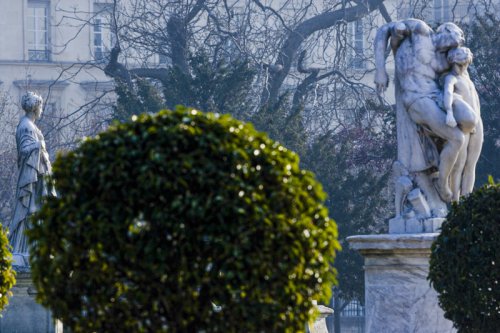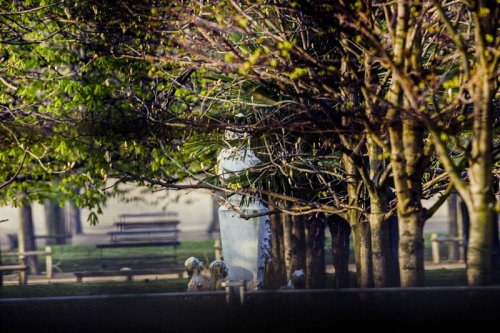"It all began with a walk in the Tuileries Gardens, but which one ?
Taking a walk in the Jardin des Tuileries, losing yourself for a moment, for a space, and rediscovering the faces of time. Change these immobile faces for a profusion of movement ; from one end of a story to the other, freeze a few droplets of time to better watch it flow and change all the time, under the sometimes blind eye of the passer-by.
Steeped in history, located in the heart of Paris, a passageway between « the urban and the garden », between the classical image of the Louvre and the contemporary image of the Water Lilies at the Orangerie on the one hand, and Peï’s pyramid and Maillold’s statues on the other, the Jardin des Tuileries is a concentrate of Parisian history.

This body of work (more than 30 years of photographs in this garden) shows that the life of this place, at first sight frozen, is inseparable from the rhythm of the city. Indeed, its history reflects the history of Paris, through details such as the evolution of the style of telephone booths, or more important events such as the anniversary of 1789 or the restoration of the Jardin des Tuileries. These photos bear witness to the influence of the modern world on this classic garden.
They show how nature and culture are increasingly intertwined in our civilisation.How nature creates culture and how culture creates nature.The trees in the Jardin des Tuileries transform the fist in Retour de Chasse into a raging, combative fist. The algae in the Tuileries Basin, caused by the warming of the atmosphere, transforms the Garden into an improbable tropical park, while his sculptures become half-living beings thanks to the transparency of their temporary protection.
In the same way, the transparency of windscreens, the sculpted trees in the Jardin des Tuileries and the glass windscreens transform our perception of nature.This is why we are increasingly encountering a landscape where nature and man’s imprint intermingle to form a new world.
Hervé Bernard
 Regard sur l’image
Regard sur l’image

